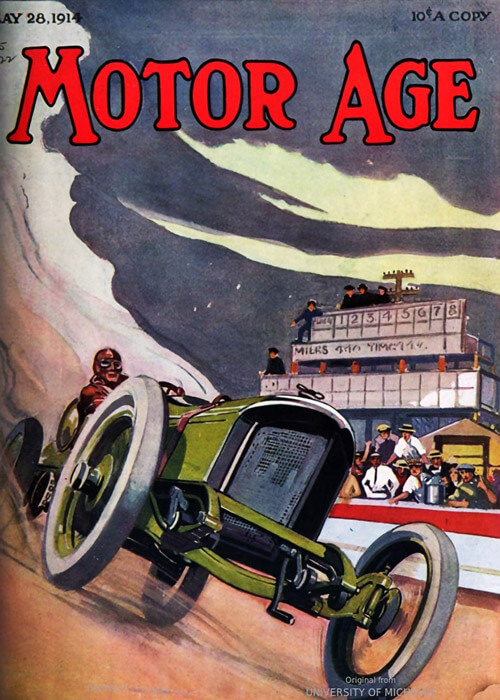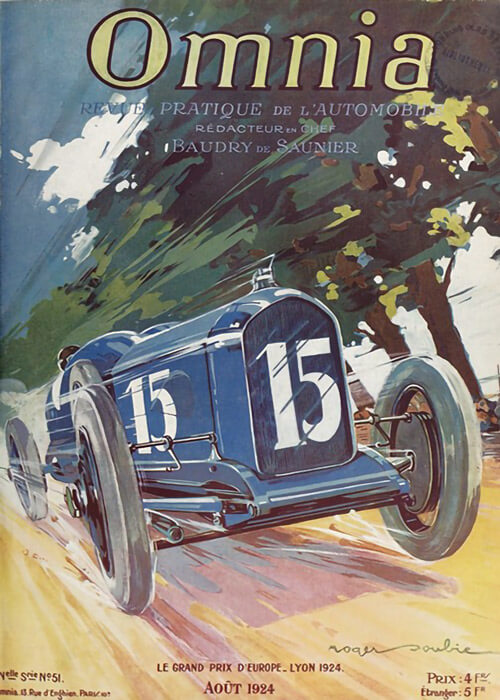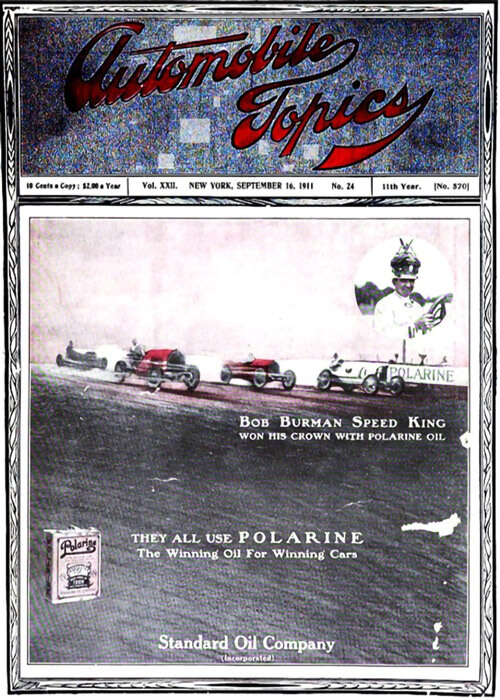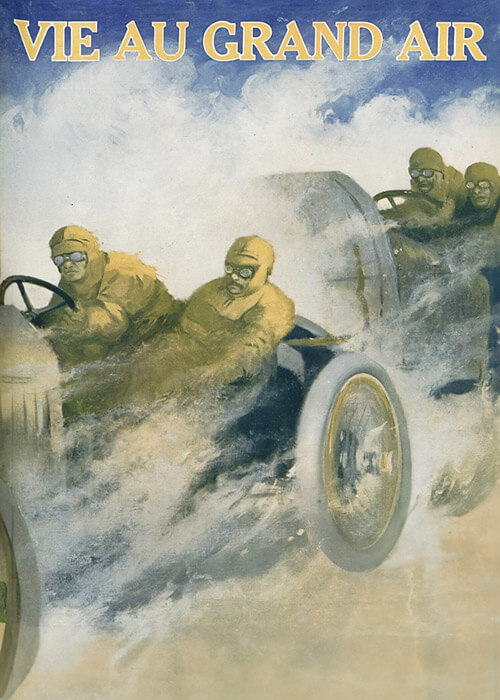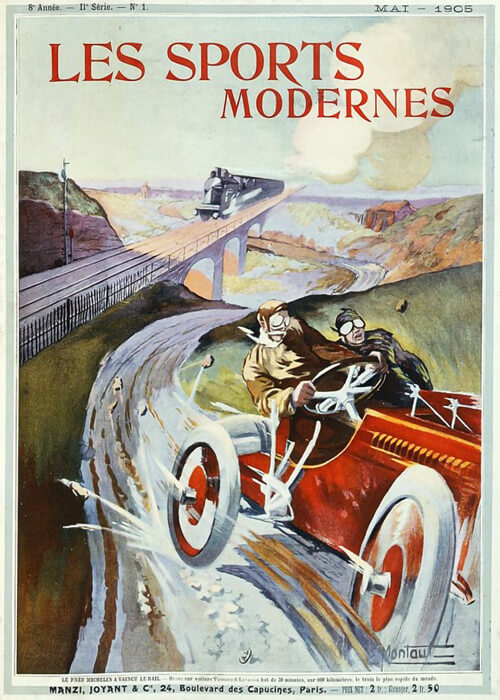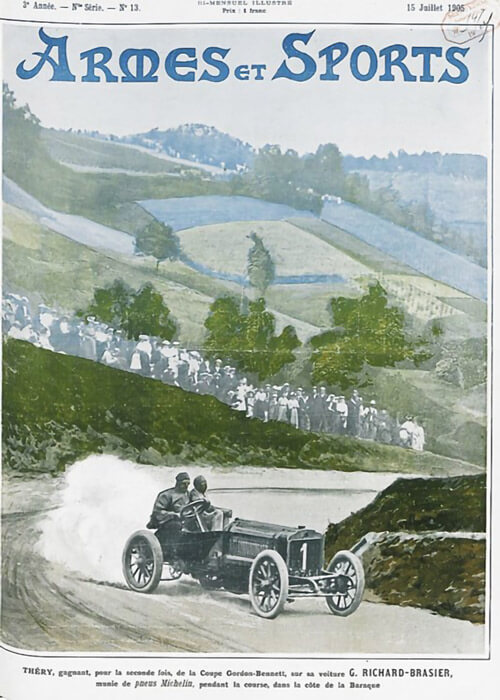This article was written by the well known American reporter William F. Bradley. Being stationed in Paris, he wrote for several US automotive magazines, already sind beginning of the 1900’s. His reports were always woven in very technical contents. This French Grand Prix was the first GP race on the new Linas-Monthléry track near Paris. Robert Benoist in a Delage won the race, in which Antonio Ascari sadly lost his life.
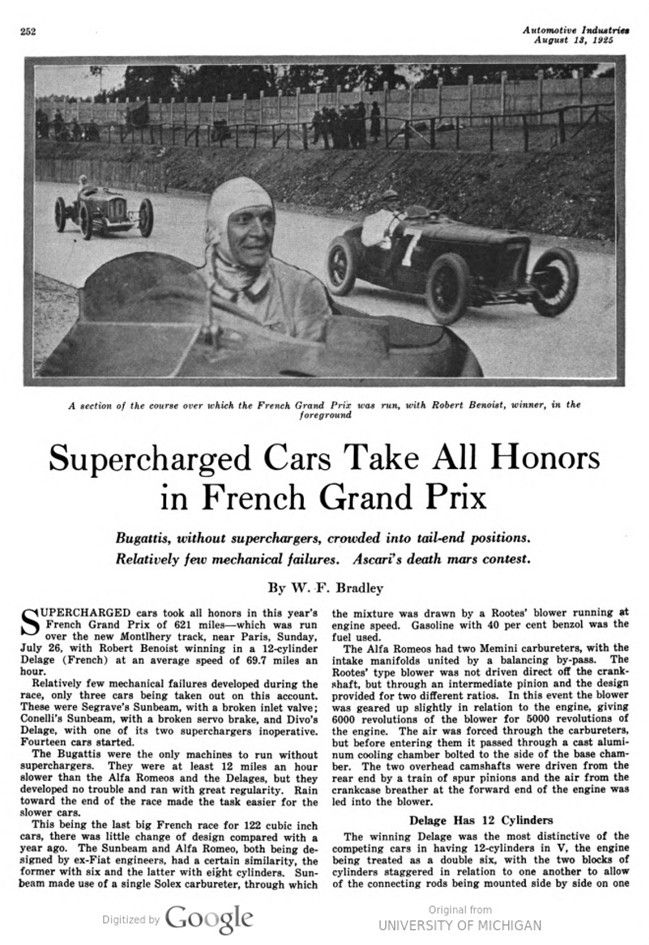
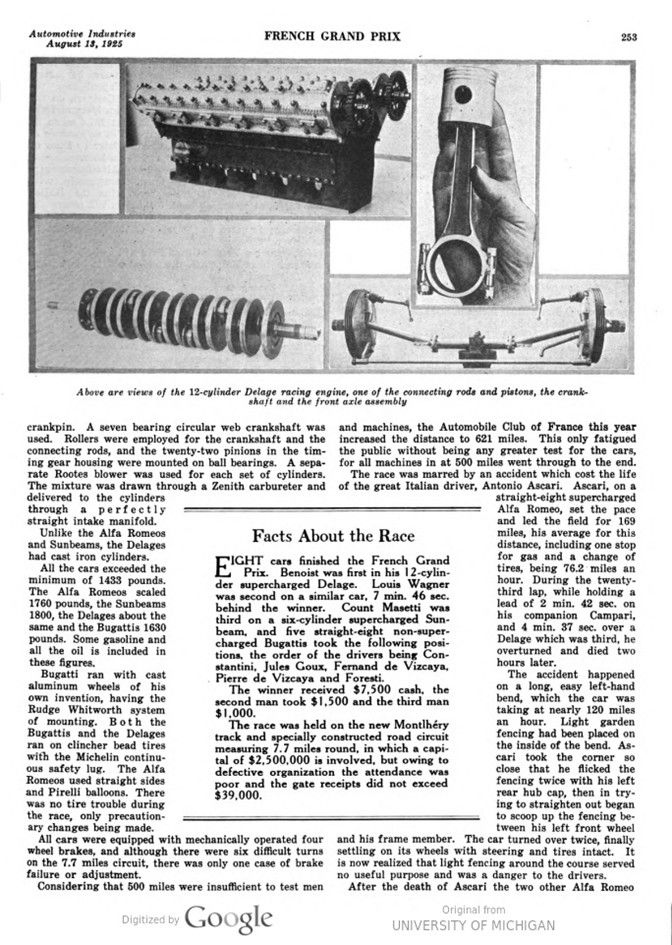
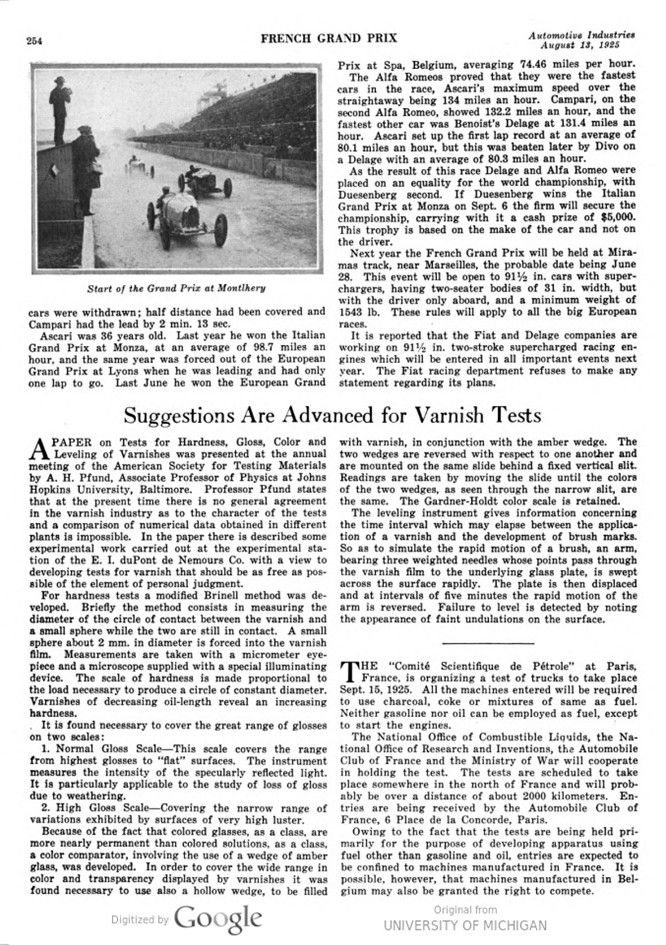
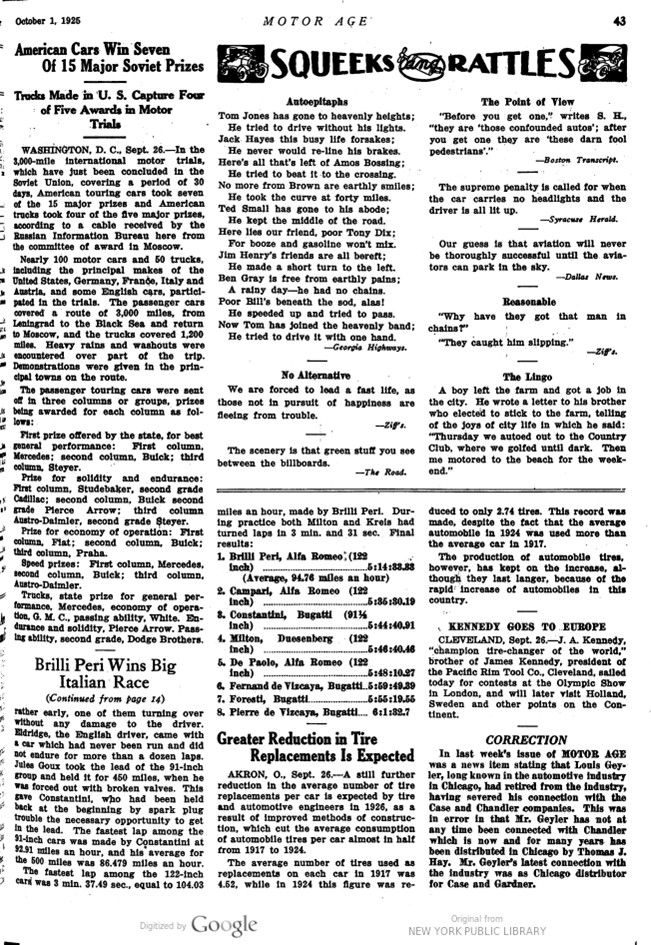
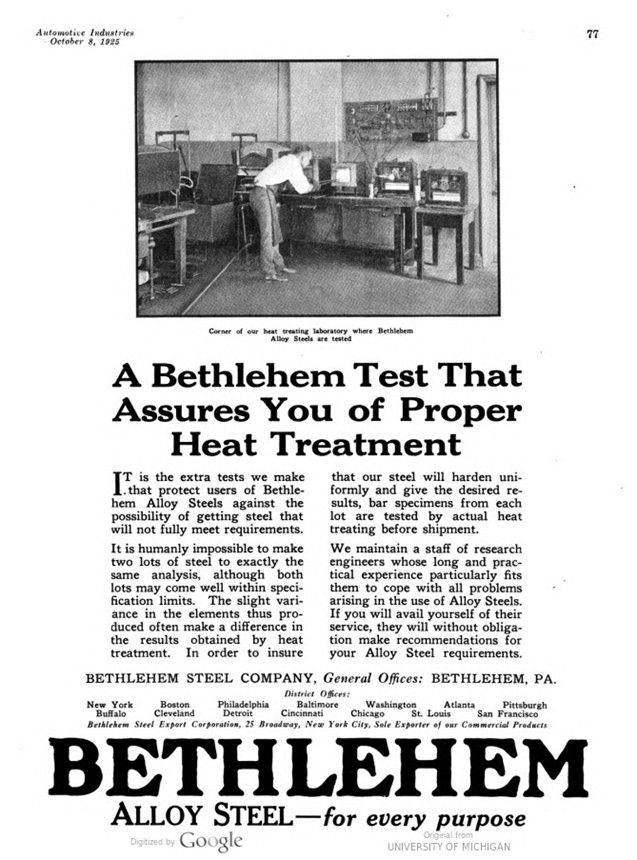
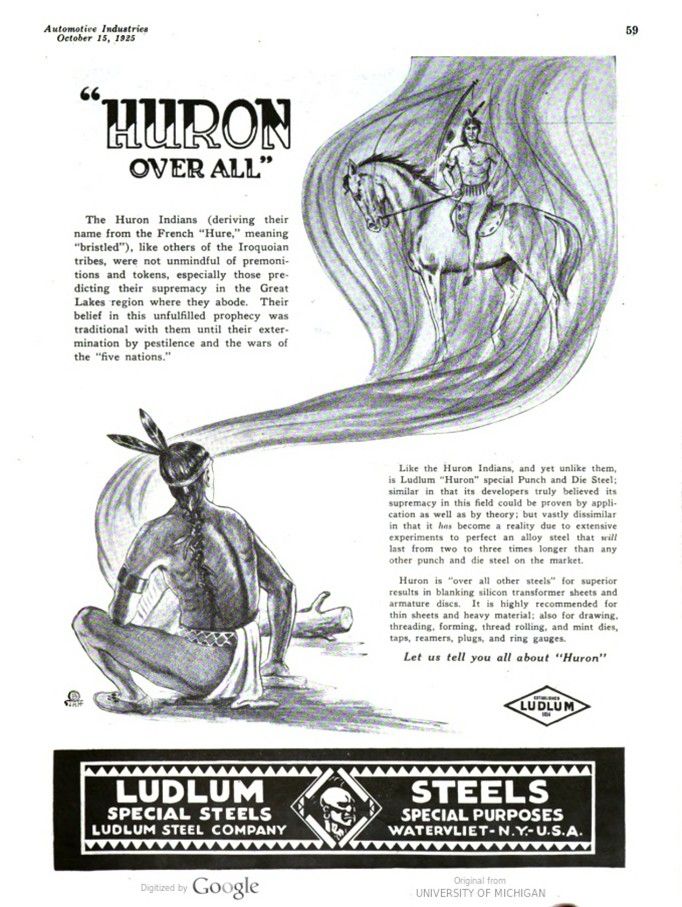
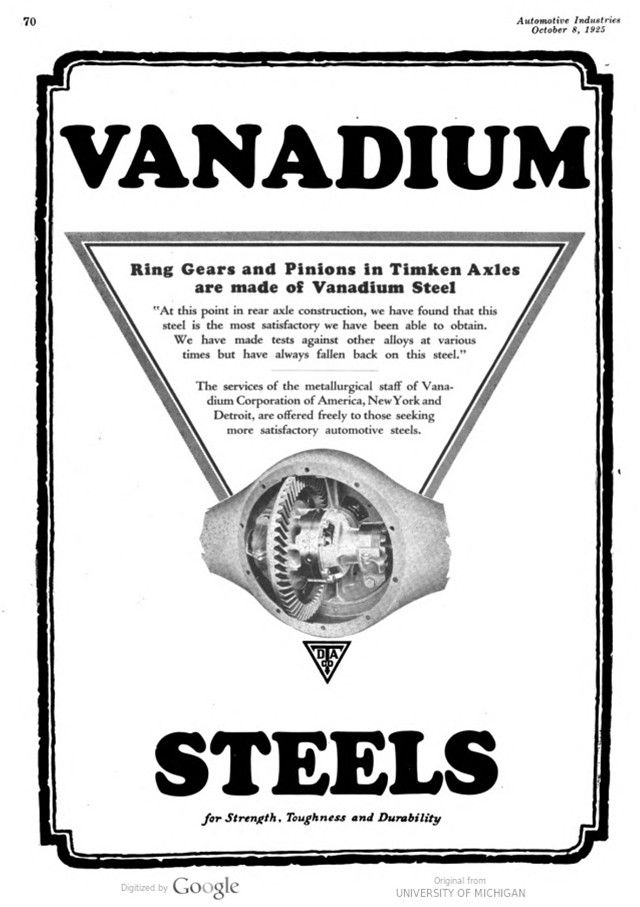
Text and jpegs by courtesy of hathitrust.org www.hathitrust.org, compiled by motorracinghistory.com
Automotive Industries, Vol. LIII, No. 14-18, October 2, 1925
Supercharged Cars Take All Honors in French Grand Prix
Bugatti’s, without superchargers, crowded into tail-end positions.
Relatively few mechanical failures. Ascari’s death mars contest.
By W. F. Bradley
SUPERCHARGED cars took all honors in this year’s French Grand Prix of 621 miles – which was run over the new Montlhéry track, near Paris, Sunday, July 26, with Robert Benoist winning in a 12-cylinder Delage (French) at an average speed of 69.7 miles an hour.
Relatively few mechanical failures developed during the race, only three cars being taken out on this account. These were Segrave’s Sunbeam, with a broken inlet valve; Conelli’s Sunbeam, with a broken servo brake, and Divo’s Delage, with one of its two superchargers inoperative. Fourteen cars started.
The Bugattis were the only machines to run without superchargers. They were at least 12 miles an hour slower than the Alfa Romeos and the Delages, but they developed no trouble and ran with great regularity. Rain toward the end of the race made the task easier for the slower cars.
This being the last big French race for 122 cubic inch cars, there was little change of design compared with a year ago. The Sunbeam and Alfa Romeo, both being de- signed by ex-Fiat engineers, had a certain similarity, the former with six and the latter with eight cylinders. Sunbeam made use of a single Solex carbureter, through which the mixture was drawn by a Rootes‘ blower running at engine speed. Gasoline with 40 per cent benzol was the fuel used.
The Alfa Romeos had two Memini carbureters, with the intake manifolds united by a balancing by-pass. The Rootes‘ type blower was not driven direct off the crankshaft, but through an intermediate pinion and the design provided for two different ratios. In this event the blower was geared up slightly in relation to the engine, giving 6000 revolutions of the blower for 5000 revolutions of the engine. The air was forced through the carbureters, but before entering them it passed through a cast aluminum cooling chamber bolted to the side of the base chamber. The two overhead camshafts were driven from the rear end by a train of spur pinions and the air from the crankcase breather at the forward end of the engine was led into the blower.
Delage Has 12 Cylinders
The winning Delage was the most distinctive of the competing cars in having 12-cylinders in V, the engine being treated as a double six, with the two blocks of cylinders staggered in relation to one another to allow of the connecting rods being mounted side by side on one crankpin. A seven bearing circular web crankshaft was used. Rollers were employed for the crankshaft and the connecting rods, and the twenty-two pinions in the timing gear housing were mounted on ball bearings. A separate Rootes blower was used for each set of cylinders. The mixture was drawn through a Zenith carbureter and delivered to the cylinders through a perfectly straight intake manifold.
Unlike the Alfa Romeos and Sunbeams, the Delages had cast iron cylinders.
All the cars exceeded the minimum of 1433 pounds. The Alfa Romeos scaled 1760 pounds, the Sunbeams 1800, the Delages about the same and the Bugattis 1630 pounds. Some gasoline and all the oil is included in these figures.
Bugatti ran with cast aluminum wheels of his own invention, having the Rudge Whitworth system of mounting. Both the Bugattis and the Delages ran on clincher bead tires with the Michelin continuous safety lug. The Alfa Romeos used straight sides and Pirelli balloons. There was no tire trouble during the race, only precautionary changes being made.
All cars were equipped with mechanically operated four-wheel brakes, and although there were six difficult turns on the 7.7 miles circuit, there was only one case of brake failure or adjustment.
Considering that 500 miles were insufficient to test men and machines, the Automobile Club of France this year increased the distance to 621 miles. This only fatigued the public without being any greater test for the cars, for all machines in at 500 miles went through to the end.
The race was marred by an accident which cost the life of the great Italian driver, Antonio Ascari. Ascari, on a straight-eight supercharged Alfa Romeo, set the pace and led the field for 169 miles, his average for this distance, including one stop for gas and a change of tires, being 76.2 miles an hour. During the twenty- third lap, while holding a lead of 2 min. 42 sec. on his companion Campari, and 4 min. 37 sec. over a Delage which was third, he overturned and died two hours later.
The accident happened on a long, easy left-hand bend, which the car was taking at nearly 120 miles hour. Light garden fencing had been placed on the inside of the bend. Ascari took the corner so close that he flicked the fencing twice with his left rear hub cap, then in trying to straighten out began to scoop up the fencing between his left front wheel and his frame member. The car turned over twice, finally settling on its wheels with steering and tires intact. It is now realized that light fencing around the course served no useful purpose and was a danger to the drivers. After the death of Ascari the two other Alfa Romeo cars were withdrawn; half distance had been covered and Campari had the lead by 2 min. 13 sec.
Ascari was 36 years old. Last year he won the Italian Grand Prix at Monza, at an average of 98.7 miles an hour, and the same year was forced out of the European Grand Prix at Lyons when he was leading and had only one lap to go. Last June he won the European Grand Prix at Spa, Belgium, averaging 74.46 miles per hour.
The Alfa Romeos proved that they were the fastest cars in the race, Ascari’s maximum speed over the straightaway being 134 miles an hour. Campari, on the second Alfa Romeo, showed 132.2 miles an hour, and the fastest other car was Benoist’s Delage at 131.4 miles an hour. Ascari set up the first lap record at an average of 80.1 miles an hour, but this was beaten later by Divo on a Delage with an average of 80.3 miles an hour.
As the result of this race Delage and Alfa Romeo were placed on an equality for the world championship, with Duesenberg second. If Duesenberg wins the Italian Grand Prix at Monza on Sept. 6 the firm will secure the championship, carrying with it a cash prize of $5,000. This trophy is based on the make of the car and not on the driver.
Next year the French Grand Prix will be held at Miramas track, near Marseilles, the probable date being June 28. This event will be open to 91½ in. cars with superchargers, having two-seater bodies of 31 in. width, but with the driver only aboard, and a minimum weight of 1543 lb. These rules will apply to all the big European races.
It is reported that the Fiat and Delage companies are working on 91½ in. two-stroke supercharged racing engines which will be entered in all important events next year. The Fiat racing department refuses to make any statement regarding its plans.
